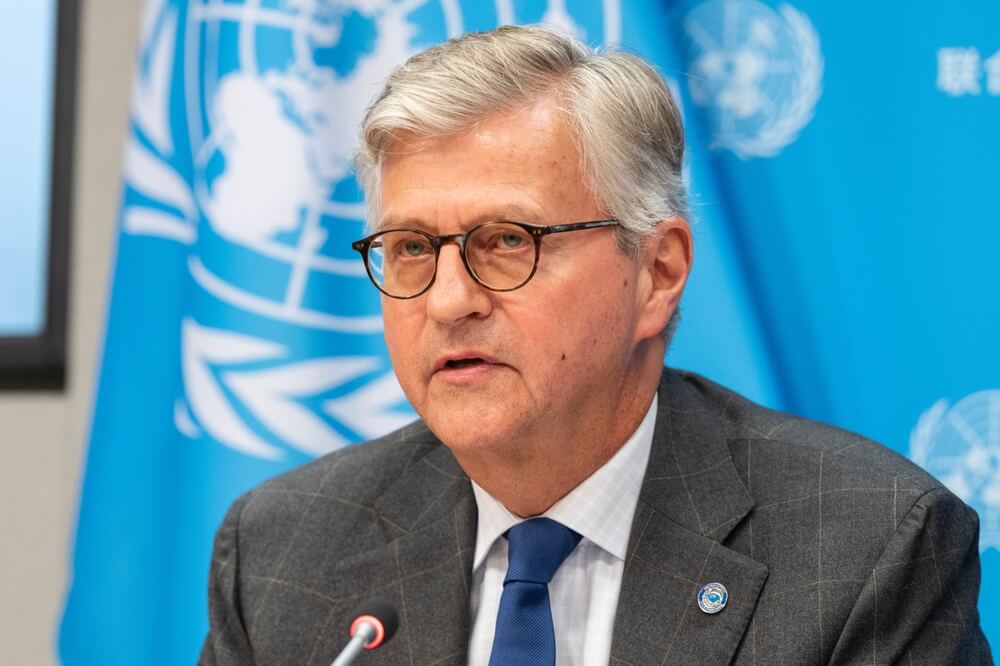Worldwide condemnation of Israeli attacks on UN positions in southern Lebanon have put the spotlight back on UN peacekeeping operations, which are easy to criticise as ineffectual but studies show they are the main multilateral tool to stop conflict spreading.
The 40 countries that contribute to the UN Interim Force in Lebanon (UNIFIL) said in a 12 October statement that they “strongly condemn recent attacks” after several peacekeepers were wounded as Israel bombarded Lebanon in its fight against Hezbollah.
Many countries also rejected the call by Benjamin Netanyahu, Israeli prime minister, for UNIFIL to heed Israel’s warnings to evacuate and accusing it of “providing a human shield” to Hezbollah.
Proponents of more support for the UN’s efforts to uphold peace are hoping that the row over UNIFIL will highlight the importance of peacekeeping and perhaps even lead to greater financial, material and political support.
Not much of a truce in the region
There are 11 peacekeeping operations around the world and many of them rarely make the headlines although they deploy a total of 72,255 military, police and civilian peacekeepers. Their tasks vary from the relatively simple monitoring of ceasefires to protection of civilians and containing violence.
Five are in Africa: in Western Sahara, Democratic Republic of the Congo, Central African Republic, South Sudan, and Abyei/Sudan/South Sudan. Two are in Europe in Kosovo/Serbia and Cyprus. One is in India/Pakistan and three are in the Middle East including Lebanon, Israel/Syria and Israel/Arab countries.
Both Israel and Lebanon say UNIFIL has never properly implemented its mandate
The latter peacekeeping force is also the oldest. The UN Truce Supervision Organization (UNTSO) was established in May 1948 to monitor the Armistice Agreement between Israel and its Arab neighbours and is based in the Biblical Hill of Evil Council in Jerusalem. Given there has not been much of a truce in the region, many Israelis and others wonder what they do.
Eli Cohen, Israeli energy minister, spoke for many Israelis when he denounced UNIFIL as a “useless” force that failed to protect Israelis from Hezbollah and he would likely use the same adjective to describe UNTSO.
Both Israel and Lebanon say UNIFIL has never properly implemented its mandate to maintain peace and help the Lebanese government to build its presence in areas where Hezbollah has held sway.
The annual budget
The UN, meanwhile, is strongly defending its position. “Attacks against peacekeepers are in breach of international law, including international humanitarian law. They may constitute a war crime,” said UN spokesperson Stéphane Dujarric.
The UN says the annual budget for UN Peacekeeping is $6.1 billion, or only 0.5% of global military spending, considerably less than the cost of the New York Police or the Paris Olympics at around $10 billion. The US is the biggest financial contributor, providing 27.89% of its budget, followed by China with 15.2% and Japan with 8.5%.
Providing personnel can be a source of funds and countries that volunteer uniformed personnel to peacekeeping are reimbursed by the UN at a standard rate, approved by the General Assembly, of $1,428 per soldier per month as of 1 July 2019. India has been one of the biggest contributors of peacekeeping troops along with Nepal, Bangladesh and Rwanda.
Academics say peacekeeping missions in Africa, in particular, have a poor record
Scandal has dogged UN Peacekeeping Forces, which was awarded the 1988 Nobel Peace Prize. From allegations of sexual abuse of the civilian women they are supposed to protect to applying too strictly their authority to only use force in self-defence and defence of their mandate.
In 2016, peacekeepers stood by in the South Sudanese capital Juba while more than 200 women, including expat aid workers, were raped and gang raped only metres away from their base during violent clashes.
Academics say peacekeeping missions in Africa, in particular, have a poor record because they have failed to take into account the local drivers of conflict while trying to neutralise non-state armed groups and extend state authority.
What would the world look like in the absence of UN peacekeepers?
Nonetheless, studies show that levels of violence are lower where peacekeepers are deployed. The “relationship between peacekeeping and lower levels of violence is so consistent” that it ought to be considered “one of the most robust findings in international relations research,” say the academics Barbara F. Walter, Lise Morjé Howard, and V. Page Fortna.
Peacekeepers are facing not just state armies but a wider variety of conflict groups including militias and transnational jihadi insurgents that are often loath to adhere to any peace agreements where they exist.
 The iconic blue helmets’ ability to successfully complete their missions depends on the political will of the UN member states - Jean-Pierre Lacroix
The iconic blue helmets’ ability to successfully complete their missions depends on the political will of the UN member states - Jean-Pierre Lacroix
Financial pressures have also worsened since Donald Trump when he was president refused to pay the US’s 28% assessed contribution to the peacekeeping budget and Congress has maintained a 25% cap under President Joe Biden.
Critics rarely imagine what the world would look like in the absence of UN peacekeepers, wrote Jean-Pierre Lacroix, head of UN peacekeeping, in last month’s issue of Foreign Affairs. He said peacekeeping needed to adapt more quickly to threats such as misinformation and transnational organised crime but that member states also needed to provide stronger support to peacekeeping missions.
He said, for example, the Malian government requested last year that peacekeepers withdraw after increased terrorism as well as competition over strategy between influential states. He urged member states to recommit to peacekeeping.
“The iconic blue helmets’ ability to successfully complete their missions also depends on the political will of the UN member states,” he says. “And today, these countries are increasingly divided, their attention and resources split among multiple crises.”